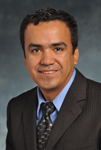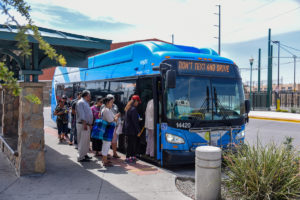For years, employees with El Paso’s transit system, Sun Metro, could only wonder how many of their riders use the Paso del Norte point of entry bridge connecting El Paso, Texas, and Ciudad Juarez, Chihuahua. Individuals are first admitted through the customs process, and then they walk the few blocks to Sun Metro’s main transit station (called the Downtown Transfer Center) and connect with a bus destined for another part of the city. Until now, Sun Metro could only guess how many of their riders came from Mexico.
I’m happy to report that this vital information is about to be available, thanks to the work of our team of researchers at the Center for international Intelligent Transportation Research (CIITR). In addition, the unique process CIITR developed to count how many riders come from across the border could also be very useful for other businesses.
First, regarding the work we’re doing for Sun Metro, determining how many riders originate from Mexico will help with system planning. Accurate numbers help determine if Sun Metro should add buses to a popular route to add capacity and meet riders’ needs. Also, knowing where riders start using the service and get off the bus—their points of origin and final destinations (O-D)—will help Sun Metro become more efficient and useful based on those individuals’ needs and interests.
To count these riders, we installed specially designed antennas — one right after the border crossing and one at Sun Metro’s main transit station — equipped with Media Access Control (MAC) address scanners. The scanners collect unique information from cell phones and other smart devices, without revealing identities of the individuals. The data collected from the border and the transit station are filtered and compared, and the duplicated addresses indicate riders who’ve crossed over from Juarez and used the Sun Metro transit bus.
This unique method of determining riders’ O-D information built on the research results of another project we did for Sun Metro more than a year ago. In that project, we used the same technology to determine rider O-D points on two different routes in the city. As with the present project, that pilot project was also conducted to help the transit agency improve services.
Businesses other than Sun Metro can benefit from this innovative application of technology as well by using this O-D data to better understand cross-border traveler behavior. For example, airports and shopping malls that have pedestrian customers now have a way to determine with accuracy where their customers are coming from and where they’re going. And knowing when customers are arriving or expecting to leave a business can help that business streamline their operations, making them more efficient, and thereby reducing both the bottom line of business expenses and, potentially, the prices of goods and services for their customers.
David Galicia is an assistant research scientist with TTI’s Center for International Intelligent Transportation Research.


